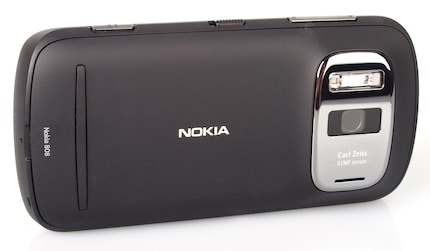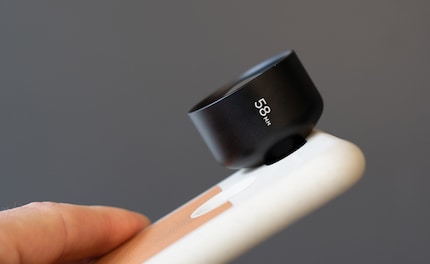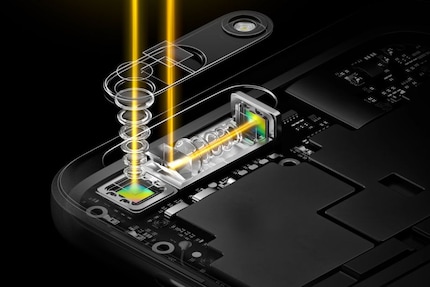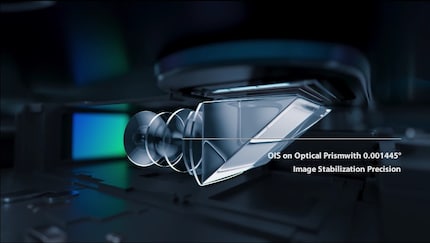
Guide
Why mobile phone cameras are not already much better
by David Lee

The Chinese company OPPO has developed a way to integrate optical zoom on smartphones without the camera sticking out so much you feel like it needs a cover of its own. There’s huge potential in the concept but it looks like it’s still at the prototype stage.
Smartphone cameras are always improving but there’s one thing they’ve still not quite cracked and that’s optical zoom. The problem is, a smartphone camera’s field of view is fixed. Enter OPPO, the Chinese manufacturer that has developed technology in response to this tricky issue.
While the OPPO brand might not be that well known in Switzerland, it’s incredibly popular in China. And given China is also at the top end of the scale when it comes to population size, OPPO has quickly become one of the biggest smartphone manufacturers in the world.
Smartphones have undoubtedly been able to offer zoom-like effects for a while now, but none of them come close to the results you get from real optical zoom. Here’s a recap of zoom features to date.
The simplest trick has the euphemistic name «digital zoom». In its most primitive form, digital zoom does nothing more than cropping an image and then expanding it. Unlike real zoom, digital zoom doesn’t give you clear images – you can’t make out the details.
We then saw a step up from digital zoom with the addition of a sensor, which has way more pixels – to the tune of 40 to 50 megapixels – than would actually be necessary for an image. A basic smartphone lens can’t reproduce something of that size. Digital zooms just use a sub-area on the sensor. This is still big enough to give them sufficient resolution (8 megapixels, for instance). The detail is much richer than on a simple digital zoom. That being said, the pixels used are tiny and so are less light-sensitive. As a result, you get poor image quality when there’s not much light. This trick was discovered in 2012 with the release of the Nokia PureView 808.

The third and recently most popular method is where the manufacturers plant several lenses on the back of the camera. But even using this method, they have to reduce the size of the sensor area in order to achieve a telescopic effect without the lens protruding out of the casing.
The final option involves using a separate zoom resolution lens that you either clip or screw on. Depending on the lens, these can give you great results. But it’s not practical and rather costly.

Why do manufacturers even need to reach for aids like a digital zoom or resort to several cameras? The answer is quite simply physical restrictions. When you zoom, the focal length changes. Reminder: the focal length is the distance between the lens and the sensor. That’s why, in compact cameras with a zoom, the lens moves further out when you zoom in closer.
That’s not what you want in a smartphone. They should stay as flat as possible, if you please. You kept seeing mashups of smartphones and zoom cameras but the concept never caught on. Somehow zoom wasn’t important enough to most people that they were willing to cart around a chunky brick all the time.
But that aside, there’s a much simpler reason, namely that it’s a lot more expensive to build a lens with a zoom than opt for a prime lens. If you’re talking about a smartphone that’s a lot more than just a camera, it’s not necessarily worth it.
OPPO technology is based on a simple idea. Light that passes through the lens bounces off a mirror at 90 degrees. This means the focal length within the casing can be longer. In this case, the focal length runs parallel to the upper edge of the smartphone.

According to OPPO, the zoom area on the new 10x zoom is the equivalent of a thumbnail focal length of 16 to 160 mm. In other words, you’ve got a strong wide-angle but not too strong a tele effect. That makes sense, as the shots are less likely to be blurry. There is, of course, an optical image stabiliser built in but even that can only do so much.
If the promo video is anything to go by, the device boasts three cameras:
As yet, OPPO hasn’t disclosed any more details. We still don’t know the size of the sensors or the lens light levels. And I can’t get my head around why it needs either of the other cameras. Maybe it’s for some kind of software optimisation such as the bokeh effect.

The concept of redirecting an image is as obvious as it is old. Devices that reflect an image via a mirror are much older than photography. This kind of image redirection is called the periscope principle. It makes me wonder why smartphone manufacturers haven’t jumped on this idea sooner. Perhaps there had been plans in place but they’d stumbled upon some technical difficulties.
OPPO did present a prototype with a 5× zoom at the Mobile World Congress in 2017. Now the Chinese company is ready to showcase another prototype. But this time it features a 10× zoom. As yet, OPPO hasn’t been able to prove the technology is ready for the market. After all, there’s not a single smartphone with a camera that works like that.
Obviously there’s a big difference between saying «we’re presenting something at a trade fair» and «we’ve built that into devices and it works seamlessly».
But one way or another, this invention will find its way onto the market. Which manufacturer will make it first across the line is unclear. All we can be sure of is that this will transform options for smartphone photography.
My interest in IT and writing landed me in tech journalism early on (2000). I want to know how we can use technology without being used. Outside of the office, I’m a keen musician who makes up for lacking talent with excessive enthusiasm.
Practical solutions for everyday problems with technology, household hacks and much more.
Show all